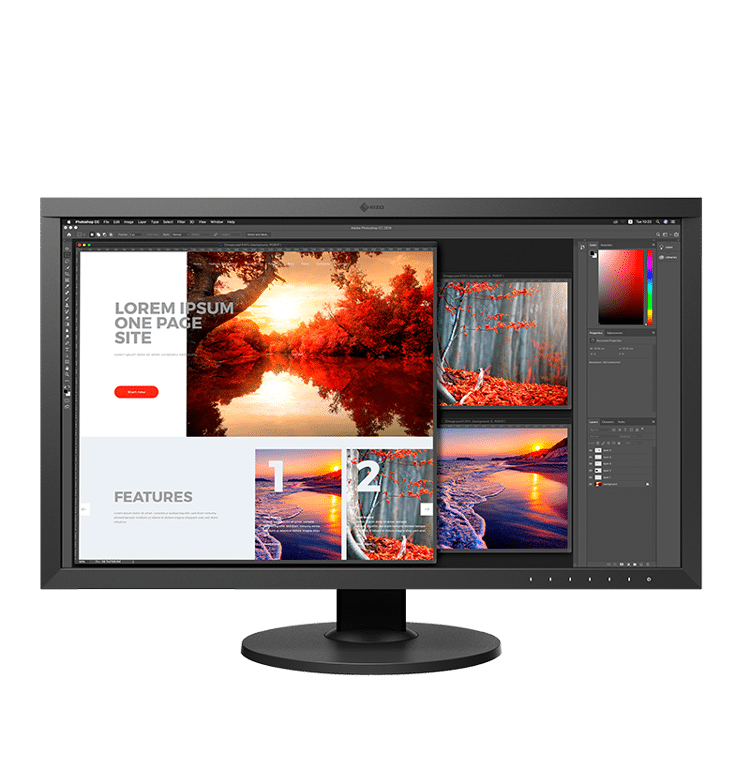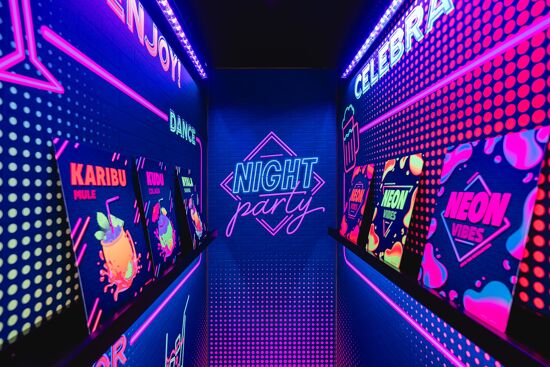Understanding the differences and similarities between monitor and RBG Device ICC Profiles

Paul Sherfield explores the the intricacies of RGB monitor profiles and RGB device profiles, uncovering the challenges and considerations that we can face in the colour management field face daily.
Firstly, do look at my overview of RGB profiles, if you have not seen it.
So, let’s explore the intricacies of RGB monitor profiles and RGB device profiles, uncovering the challenges and considerations that we can face in the colour management field face daily.
Monitor profiles: The beginning of colour accuracy
Monitor profiles are the cornerstone of accurate colour representation in digital workflows. They're essential for ensuring that what you see on your screen closely matches your intended output, whether that's for print, web, or other digital media.
A monitor profile defines how the monitor reproduces colour, essentially describing the display's colour characteristics (including white point, gamma, and gamut). It might use an RGB colour space like sRGB or AdobeRGB or customized to reflect the display's specific capabilities.
For instance, an sRGB monitor profile would constrain all colours to the sRGB gamut, while an AdobeRGB monitor profile would map all colours to the AdobeRGB gamut.
The perils of broken monitor profiles
One of the most common issues we encounter is the use of broken or incorrect monitor profiles. This problem can manifest in several ways:
1. Incorrect Colour Temperature: A broken profile might render whites with a blue or yellow cast, throwing off the entire colour balance of your work.
2. Gamma Discrepancies: Incorrect gamma settings can lead to images appearing too dark or too light on the screen.
3. Colour Shifts: Certain colours may appear drastically different, leading to confusion and inconsistency in your work.
To avoid these issues, it's crucial to regularly check and update your monitor profile. Use reliable profiling software and hardware, and don't rely on generic profiles provided by manufacturers.
The limitations of consumer grade displays
Many professionals are working on monitors that simply can't display the full range of colours in wider gamut spaces like Adobe RGB or DCI P3. This limitation can lead to several problems:
1. Colour Clipping: Colours that fall outside the monitor's gamut will be clipped, potentially leading to banding or loss of detail in saturated areas.
2. Inaccurate Representation: What you see on screen may not accurately represent how your images will look when printed or displayed on wider gamut devices.
3. Workflow Inconsistencies: If you're collaborating with others who have wide-gamut displays, you may see discrepancies in how your work appears across different screens.
Investing in a wide-gamut monitor from such as EIZO or BenQ wish can display 99% of Adobe RGB and DCI P3, can alleviate these issues, but it's essential to understand that even high-end displays have limitations and require proper bespoke ICC profiles.
The critical importance of profiling a monitor
Monitor calibration is often overlooked, but it's absolutely essential for maintaining colour accuracy.
1. Drift Over Time: Monitors naturally drift in colour and brightness over time. Regular calibration helps maintain consistency.
2. Environmental Factors: Ambient light conditions can significantly affect how colours appear on screen. Calibration helps account for these variables.
3. Device-to-Device Consistency: In a multi-monitor setup or when collaborating with others, calibration ensures consistency across different displays with a common colour space.
I recommend calibrating your monitor at least once a month using a hardware calibration device. This process creates a custom ICC profile for your specific monitor, accounting for its unique characteristics and any environmental factors.
RGB Device Profiles: Navigating the Colour Space Landscape
Now, let's dive into the world of RGB device profiles, each with its own set of advantages and challenges.
sRGB: The Web Standard
sRGB is the most widely used colour space, particularly for web content. However, it comes with significant limitations:
Advantages:
1. Universal Compatibility: Almost all devices can display sRGB colours accurately.
2. Consistent Web Experience: It ensures colours appear relatively consistent across different devices and browsers.
3. This if the ‘preset’ for most ‘low end’ monitors.
Disadvantages:
1. Limited Gamut: sRGB covers a relatively small portion of the visible colour spectrum, which can be restrictive for high-quality print work or vivid digital content.
2. Potential for Oversaturation: When converting from wider gamut’s to sRGB, colours can become undersaturated, leading to loss of detail.
Adobe RGB: The photographer's choice
Adobe RGB offers a wider gamut than sRGB, making it popular among photographers and print professionals.
Advantages:
1. Wider Gamut: It can represent a broader range of colours, especially in the cyan-green hues.
2. Better for Print: Its gamut aligns well with many CMYK print processes.
3. This is the profile that ‘high-end’ monitor can achieve.
Disadvantages:
1. Limited Device Support: Not all monitors or printers can display or reproduce the full Adobe RGB gamut.
2. Web Incompatibility: Colours may appear dull when viewed on sRGB devices.
ECIRGB v2: The printing industry standard
ECIRGB v2 is designed specifically for the printing industry, offering a balance between digital imaging and print output.
Advantages:
1. Optimized for Print: It covers most printable colours while avoiding overly saturated values that can't be reproduced in print.
2. Consistent Colour Rendering: It provides a standardized colour space for the print industry.
3. Not used and a default profile by monitors. The use of a profiling software and hardware is needed.
Disadvantages:
1. Limited Software Support: Not all image editing software supports ECIRGB v2 natively.
2. Complexity: It requires a good understanding of colour management to use effectively.
ProPhoto RGB: The wide gamut wonder
ProPhoto RGB boasts an extremely wide gamut, encompassing almost all visible colours.
Advantages:
1. Future-Proofing: It can represent colours that current devices can't display, potentially useful as technology advances.
2. Minimal Colour Clipping: It rarely clips colours during editing, preserving maximum colour information.
Disadvantages:
1. Risk of Posterization: When working in 8-bit colour depth, the wide gamut can lead to posterization in gradients.
2. Conversion Challenges: Converting from ProPhoto RGB to narrower gamut’s can result in significant colour shifts.
DCI P3: The cinema and mobile standard
DCI P3 is commonly used in digital cinema and is becoming increasingly popular in mobile devices.
Advantages:
1. Wider than sRGB: It offers more vibrant colours, especially in the red-green range.
2. Growing Support: Many modern devices, especially Apple products, support DCI P3.
3. Used in Apple products as a device profile and a monitor profile.
Disadvantages:
1. Similar Adobe RGB: It still doesn't cover some printable colours that Adobe RGB can represent.
2. Potential for Oversaturation: When viewed on sRGB devices, DCI P3 content can appear oversaturated if not properly managed.
Key considerations in Colour Management
Profile Mismatches: Common Pitfalls
One of the most frequent issues in colour management is profile mismatches. This occurs when different parts of your workflow use different colour profiles. For example:
1. Camera to Editor Mismatch: If your camera captures in Adobe RGB but your editing software is set to sRGB, you may lose colour information.
2. Editor to Output Mismatch: Editing in ProPhoto RGB but outputting to a device that only supports sRGB can lead to unexpected colour shifts and desaturation.
3. Soft Proofing Errors: Failing to properly soft proof your work using the correct output profile can lead to surprises when you see the final product.
To mitigate these issues, maintain a consistent colour management workflow from capture to output. Always be aware of the colour spaces you're working in and convert profiles at the appropriate stages of your workflow.
The Challenges of Colour Space Conversion
Converting between colour spaces, especially from wider to narrower gamut’s, presents several challenges:
1. Colour Clipping: Colours that exist in the source space but not in the destination space will be clipped, potentially leading to loss of detail or colour shifts.
2. Rendering Intent Choices: Choosing between perceptual, relative colourimetric, absolute colourimetric, and saturation rendering intents can significantly affect how colours are mapped between spaces.
3. Metameric Failure: Colours that match in one colour space may not match in another, leading to unexpected results when converting between spaces.
To address these challenges, it's crucial to understand the gamut’s of your source and destination colour spaces and choose appropriate rendering intents for your specific needs.
Hardware limitations: The reality check
It's important to remember that no device can reproduce all visible colours. Each has its limitations:
1. Monitor Gamut: Even high-end wide-gamut monitors can't display the full range of colours in spaces like ProPhoto RGB.
2. Printer Gamut: CMYK printers have a more limited gamuts than most RGB colour spaces, necessitating careful colour management for print work.
3. Device Variability: Two devices of the same model may have slight variations in colour reproduction, emphasizing the need for individual device calibration.
Understanding these limitations helps set realistic expectations and guides decisions about which colour spaces to use in different scenarios.
Software compatibility: The weak link
Not all software is created equal when it comes to colour management. Some issues to be aware of include:
1. Inconsistent Colour Management: Some applications may ignore embedded profiles or apply them incorrectly.
2. Limited Profile Support: Certain software may not support all colour profiles, particularly newer or less common ones.
3. Web Browsers: Different browsers handle colour management differently, which can lead to inconsistencies in how web content appears.
To mitigate these issues, choose colour-managed applications for critical work, and be aware of how different software handles colour profiles.
Conclusion: Navigating the world of colour management
In conclusion, understanding and managing colour profiles is a complex but crucial aspect of digital imaging and printing. The choice between sRGB, Adobe RGB, ECIRGB v2, ProPhoto RGB, and DCI P3 depends on your specific needs, workflow, and output requirements.
Key takeaways:
1. Regularly calibrate your monitor and use appropriate profiles. For the high-end monitor it is best use the full gamut of the monitor when creating profiles using a colorimeter and the software provided.
2. Understand the strengths and limitations of different colour spaces.
3. Maintain a consistent colour-managed workflow from capture to output.
4. Be aware of the colour management capabilities of your software and hardware.
5. Use soft proofing to preview how your work will appear in different colour spaces.
By mastering these concepts and practices, you can ensure more accurate and consistent colour reproduction across different devices and media, ultimately leading to higher quality output and more satisfied clients.
Remember, colour management is an ongoing process. Stay informed about new developments in colour science and technology, and don't hesitate to seek expert advice when dealing with complex colour management challenges.
Topics
Interested in joining our community?
Enquire today about joining your local FESPA Association or FESPA Direct
Recent news

Kernow Coatings to showcase innovative solutions at FESPA 2025
Kernow Coatings will showcase innovative, sustainable wide-format printing solutions at FESPA 2025. Highlights include a collaboration with Ricoh for a space-themed booth, featuring KernowJet MetaliK and Interiors Structured Silver. They'll also present recyclable wallcoverings and PVC-free media, emphasizing high-performance, eco-friendly options.

European Sign Expo: Where Visionaries Meet
In under one month’s time, sign makers and visual communications specialists will congregate at European Sign Expo 2025 to see the latest technology developments and trends across the sign industry.

From Imagination to Fabric: Exploring Generative AI with ROQ and Printbox
ROQ and Printbox's upcoming session at SmartHub Conference at Personalisation Experience will demonstrate real-time AI-powered t-shirt personalisation. Attendees will be able to create designs with AI, printed live on ROQ's DTG printers. This will showcase the power of combining generative AI with on-demand printing, revolutionising customer experience and apparel customisation.

GCC LaserPro at FESPA 2025: Pioneering the Future of Speed and Precision
GCC, a leading front-end R&D company, established its brand, GCC LaserPro, to drive innovation in laser engraving and cutting solutions. We are excited to showcase our latest advancements at FESPA 2025 in Berlin!